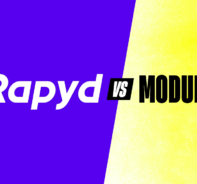Gain an advantage in any market by enabling different payment methods to meet customer needs and preferences.
eCommerce continues to explode around the world in popularity and necessity, and the need for businesses to reach a global consumer audience is greater than ever. If your business sells cross-border or has plans to scale globally in the future, it’s critical for you to understand different types of payment methods and where they are most popular.
Types of Payment Methods
Cash
While COD accounts for 5% of global ecommerce, (Worldpay) there are other options to take cash payments that offer much less risk for the merchant overall.
With voucher payment methods, like Boleto in Brazil, a customer can select a product online and print a voucher or receive a QR code on their phone. When they take that voucher or code to a participating store, they redeem or scan the code and pay cash for their purchase. This option allows funds to be sent digitally to the merchant, who then ships the product, all verified by the store accepting the payment.
Bank Transfers
Using a bank transfer allows a consumer to complete a transaction by moving money from their bank account directly to your settlement account or bank account. This payment method is favored in parts of Western Europe, with nearly 55% of online transactions in the Netherlands used by bank transfer platform iDEAL. (eCommerce News)
Platforms like iDEAL or Faster Payments in the UK allow customers to authenticate their payments in their online banking environment and enable merchants to get their payment faster while offering protection from credit card chargebacks. Bank Transfers are also favored for real-time peer-to-peer payments and for many B2B transactions.
Debit & Credit Card Payments
Cards are likely the most ubiquitous online payment method available to consumers today, whether in the form of a bank debit or credit card. In addition to giants like Visa, Mastercard, and American Express, different regions have their own popular card networks, such as JCB in Japan, or Elo in Brazil.
It’s also important that businesses note that many cards are limited to domestic purchases, businesses need to have a partner with a local presence in the regions where they are doing business to accept these transactions.
eWallet
eWallets have exploded in popularity over the last several years (Fintech News), offering opportunities from both merchants as well as mobile providers to link bank account information or store money or payment card details inside the ewallet to be used to pay for purchases on demand.
A market that was once barely permeated is now booming, meaning that merchants must exercise judgment on which ewallets they provide as options for customers in their respective regions.
Four Advantages of Offering Different Payment Methods
Increased Revenue
More transaction opportunities with more customers in more countries leads to more revenue. According to Forrester Technographics and the Rapyd Study of Online Shoppers, credit card-based transactions only make up for roughly half of all online payments. Nearly half of the overall consumer audience is using different types of payment methods. When customers have a range of payment options available to them, particularly when they cater to regional payment method preferences, they are less likely to abandon their cart. (Forbes)
Time & Money Saved
Offering a variety of different payment methods can feel daunting. Using a single payment processing platform that automatically offers customers preferred payment methods based on their location eliminates that headache and makes it faster and easier than ever to expand your addressable market. A single platform also saves you the time and expense of managing multiple payment method integrations and navigating regulations and compliance requirements across regions.
Greater Customer Loyalty
When the buying experience is easier, it creates a higher volume of customers and a higher frequency of transactions. Offering different payment methods that reduce payment friction keeps customers coming back.
Playbook for the New Era of Digital Commerce
Get more tips for growing sales and gaining a competitive advantage in global online commerce with this exclusive report created with data from a Forrester Consumer Technographics Survey.
Sources:
BCG, and Google. “Digital Payments 2020: The Making of a $500 Billion Ecosystem in India.” BCG-Google Digital Payments, 2016, https://image-src.bcg.com/BCG_COM/BCG-Google%20Digital%20Payments%202020-July%202016_tcm21-39245.pdf. Accessed 14 12 2020.
eCommerce News Europe. “iDeal used for 59% of Dutch online purchases.” eCommerce News Europe, eCommerce News, 2019, https://ecommercenews.eu/ideal-used-for-59-of-dutch-online-purchases/.
Fintech News. “The number of mobile wallet users grows by 140 million per year.” Fintech News, 2019, https://www.fintechnews.org/the-number-of-mobile-wallet-users-grows-by-140-million-per-year/. Accessed 14 12 2020.
Forbes. “Why Businesses Need Diverse Payment Options.” Forbes, 2019, https://www.forbes.com/sites/ilkerkoksal/2019/08/31/why-businesses-need-diverse-payment-options/?sh=26403f1e7ebd. Accessed 14 12 2020.
Worldpay. “Worldpay Global Payments Report 2020.” 2020, https://worldpay.globalpaymentsreport.com/#/en.
Subscribe Via Email
Thank You!
You’ve Been Subscribed.




